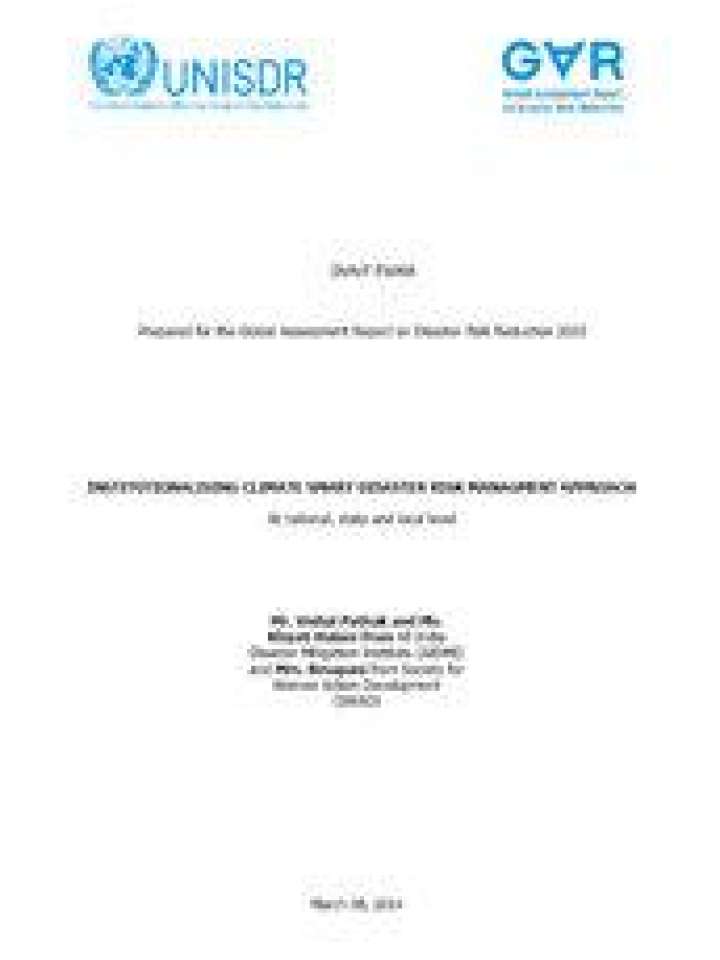Institutionalising climate smart disaster risk management approach
This paper presents the Climate Smart Disaster Risk Management (CSDRM) approach for mainstreaming adaptation to climate change and disaster risk reduction within development at the community level. The approach helps to evaluate the existing tools and frameworks from disaster risk management, climate change adaptation and development that are right for particular programmes or projects. Moreover, it helps to build partnerships and evaluate progress through concrete indicators that can help implementation of policies that are disaster resilient.
The lessons learnt presented in this document are the following (p. 13-15):
- Directly involving communities by discussing uncertain situations due to climate change not only increases the awareness but helps to gain community support to implement future actions to mitigate the risks.
- Being climate smart will include climate adaptive strategies. Implementation of new agricultural practice such as varying the time of seed plantation or having mixed cultivation or using disaster resilient crops can reduce the agricultural losses.
- Enhancing the adaptive capacity of farmers through horizontal and vertical integration such livestock management training, animal husbandry, fish farming will reduce the vulnerability of the community during the times of low productivity.
- Due to the wide choice of action points, it takes time to choose the right one for the organisation and then create indicators that can be implemented at ground level.
- It is essential to understand the local knowledge and their perception on adaptation strategies.
- It is vital to communicate the CSDRM approach and disaster-related information in a user-friendly format.
- Facilitating interactions between communities, partners and other stakeholders, particularly the government, helps to reach a greater number of people.
- Community members have been responding to climate change by modifying their traditional methods.
- Institutions should make efforts to find ways to modify the traditional techniques to make them user-friendly and climate smart.
- Some adaptive techniques such as relocation of villages are easier in theory, however very difficult to implement where the lives of people are heavily dependent on the coastline or land or river.
- Developing climate awareness at local level becomes the first step towards becoming climate smart for institutions working with local communities prone to climatic hazards.
- It is important to understand how the local community and involved stakeholders understand and perceive the meaning of different climate-related terms.
- Further, when implemented at the national level it is essential to ensure that all the developmental plans factor in climate change and its potential impacts so that the new infrastructure can withstand shocks.
This document is an input paper of the 2015 Global Assessment Report on Disaster Risk Reduction.
